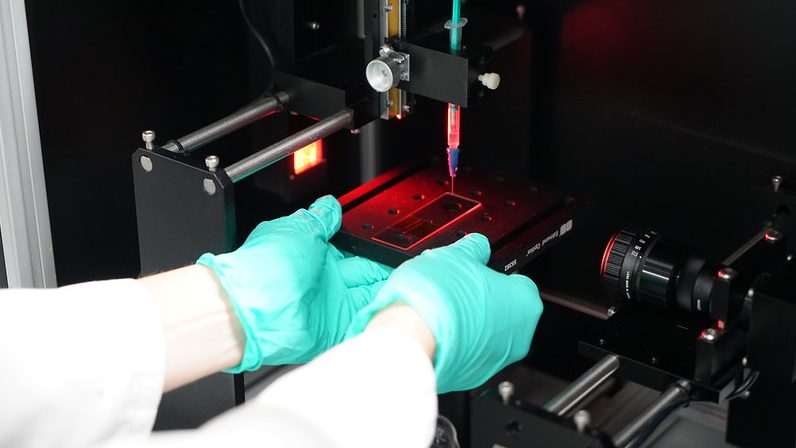SPECIFIC researcher Suzanne Thomas is working on integrating perovskite solar cells, which are cheap and easy to process, with the Internet of Things (IoT) for use in indoor settings. The Internet of Things describes the idea that sensors and software can be embedded in everyday objects and linked up to interact with each other over the internet. An example of integrating solar cells could be an office temperature sensor powered using a cell battery. So during the day, the perovskite solar devices would refuel the battery using the office lighting. Suzanne tells us more…
How does your research apply to the world around us?
With increasing connectivity in the world around us from smart watches to smart washing machines, there is an increased draw from households on the electricity grid. But if we can supply the energy to run them from sustainable sources such as solar cells, we can minimise the impact of these IoT devices within the home.
How does this tie into the idea of Active Buildings?
Due to their high levels of sensing nodes, Active Buildings are an ideal setting to test out this sort of project. However the sensors all pull energy from the buildings power sources. By using an indoor solar cell to power a sensor, it can be removed from the main power source of the building, therefore reducing the power used.
Why is your group’s research important to the field?
The uniqueness of this project comes from the testing regime in place for monitoring the maximum power output for each cell in a realistic indoor scenario. My work is focused on the testing methods we use to determine the power output of solar cells for indoor applications. Generally, a static lux value of 200 or 1000 Lux is used to produce a power curve from which the maximum power point can be obtained. We propose a method which uses real data collected from office scenarios (where an IoT sensor might be placed), alongside a maximum power point tracker with a variable lux LED array. The realistic data is replicated by the LED array and the maximum power point of the cell can be tracked throughout the scenario. The results obtained from this are anticipated to be much more accurate than a standard power curve.
How did lockdown affect your work?
We have all struggled to maintain our working with the lab closures. Thankfully, they are open again and it’s full steam ahead with back to work plans. We participated in online conferences and meetings during lockdown to keep each other sane and have emerged unscathed and ready to return to our work thanks to the understanding of our project lead.

Active Buildings like these could have sensors powered by solar cells 
